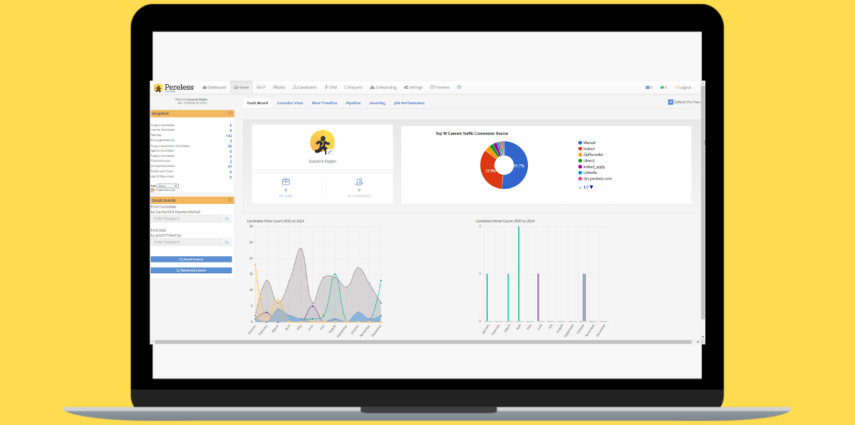In today’s fast-paced business world, franchise owners face unique challenges when it comes to recruiting top talent. From managing multiple locations to ensuring consistent hiring standards, the recruitment process can quickly become overwhelming. Fortunately, recruiting software combined with an Applicant Tracking System (ATS) offers a game-changing solution. By leveraging these tools, franchise owners can streamline hiring, improve candidate quality, and grow their businesses efficiently.
Why Franchise Owners Need Recruiting Software with an ATS
Franchise businesses often operate across various cities or states, making centralized hiring difficult. Without a standardized process, franchise owners risk inconsistent candidate evaluation, prolonged vacancy periods, and increased costs. Recruiting software equipped with an ATS addresses these challenges by automating and organizing the entire recruitment lifecycle.
An ATS simplifies candidate sourcing, screening, and communication—ensuring the best hires are made quickly. It offers features such as resume parsing, interview scheduling, and reporting capabilities, all accessible through a centralized platform. This not only saves time but also enhances collaboration among franchise managers.
Key Benefits of Using Recruiting Software with an ATS for Franchises
Streamlined Hiring Process: Automate repetitive tasks like posting job openings and filtering resumes. This allows franchise owners to focus on interviewing and onboarding top candidates.
Centralized Candidate Database: Maintain a robust pool of talent accessible by all franchise locations, enabling quick hiring when positions open.
Consistent Hiring Standards: Use customizable templates and workflows to standardize recruitment criteria across all franchises, ensuring quality hires.
Improved Candidate Experience: Automated communication keeps applicants informed at every stage, boosting your employer brand.
Data-Driven Decisions: Generate insightful reports on recruitment metrics, helping franchise owners refine strategies and optimize hiring outcomes.
How to Choose the Right Recruiting Software and ATS
When selecting recruiting software with an ATS, franchise owners should consider:
Scalability: The system should grow with your franchise network.
Integration: Look for tools that seamlessly integrate with your existing HR and payroll systems.
User-Friendliness: A simple interface ensures franchise managers nationwide can use the software effectively.
Customization: Ability to tailor workflows and job postings specific to each franchise location.
Customer Support: Responsive support is crucial to address any operational issues promptly.
Recruiting software integrated with an ATS is no longer a luxury but a necessity for franchise owners aiming to hire efficiently and maintain high-quality standards across multiple locations. By automating recruitment tasks and centralizing candidate data, franchises can reduce time-to-hire, improve candidate quality, and ultimately drive business growth. Investing in the right ATS solution empowers franchise owners to build strong teams that reflect their brand’s values and commitment to excellence.
*Recently, Pereless Systems launched their AI mascot named Bradford! Bradford has over 25 years of talent management experience. After every blog, Bradford will provide his expertise in the intricate world of talent management software like never before.*
What Would Bradford Do?

Recruiting software integrated with an ATS is no longer a luxury but a necessity for franchise owners aiming to hire efficiently and maintain high-quality standards across multiple locations. By automating recruitment tasks and centralizing candidate data, franchises can reduce time-to-hire, improve candidate quality, and ultimately drive business growth. Investing in the right ATS solution empowers franchise owners to build strong teams that reflect their brand’s values and commitment to excellence.
Make the shift today and see how recruiting software can transform your hiring experience into a more efficient, effective, and enjoyable process. It’s time to save time and money while revolutionizing your recruitment efforts for a brighter business future!












